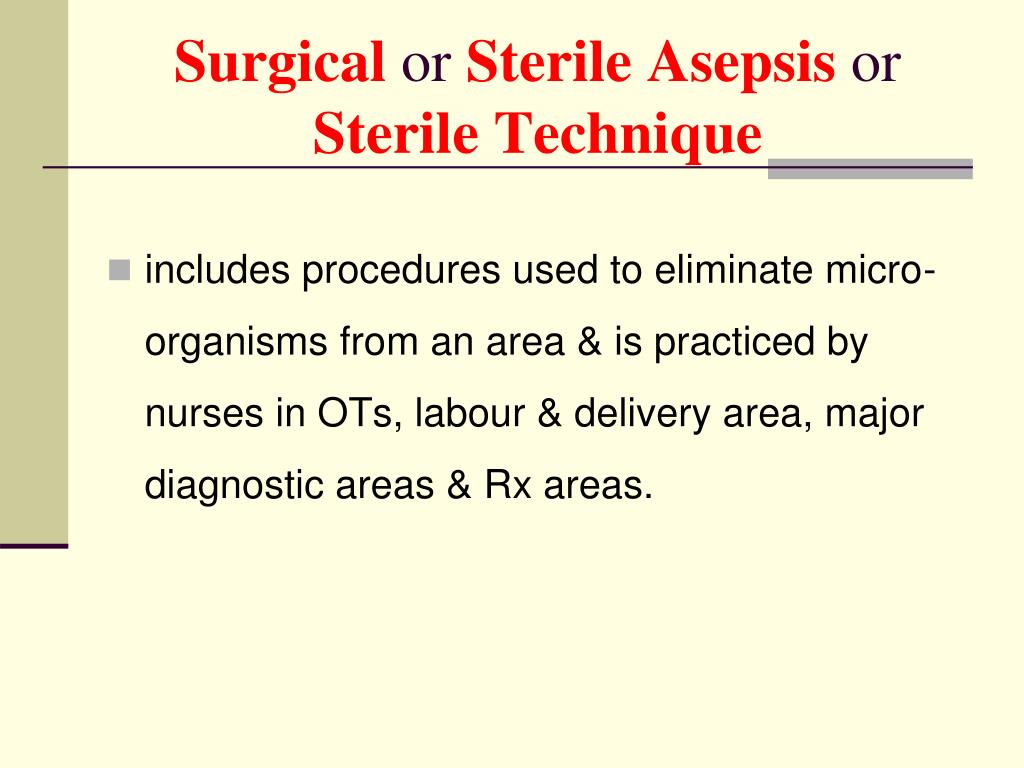

#Sterile asepsis skin#

Make a fist with your right hand and stretch the glove over your left fingertips.

Lay the glove on your left wrist with the fingers of the glove pointing toward you. Hold your left hand palm up, and keep your fingers straight. With your gown covering your fingers, use your right hand to remove the left glove from the open sterile package.Open the sterile inner glove pack by gripping it with your fingers through your gown sleeves.Perform surgical hand antisepsis and don a sterile gown, keeping fingers inside the sleeves of the gown.Be careful not to touch the sterile inner pack. Open sterile glove package by peeling apart the outer packaging from the corners.The first is called “closed donning” or the “closed cuff method.” The second is “open donning” or the “open cuff method.” There are two techniques for donning sterile gloves. Dental assistants must adhere to proper protocols when donning sterile gloves to prevent transmission of pathogens. Some dental procedures require sterile gloves. 1 The minimum duration for surgical hand antisepsis is two to six minutes. They should contain a nonirritating antimicrobial preparation with a broad spectrum of activity, be fast-acting, and have a persistent effect. Agents used for surgical hand antisepsis should reduce microorganisms on intact skin. Skin bacteria can rapidly multiply under surgical gloves if hands are washed with soap that is not antimicrobial. The purpose of hand antisepsis and sterile gloves is to eliminate transient flora and reduce resident flora during a procedure to prevent introducing organisms into the wound if the gloves become torn. If the hands are not visibly soiled, an alcohol-based hand rub is adequate. For routine dental exams and nonsurgical procedures, hand washing and hand antisepsis are achieved by using soap and water. The preferred method for hand hygiene depends on the type of procedure, the degree of contamination, and the desired persistence of antimicrobial action on the skin. The fundamental principle of hand washing is removal, not killing. Hand washing suspends microorganisms and mechanically removes them by rinsing with water. This is achieved by vigorously rubbing together all surfaces of lathered hands for at least 20 seconds, followed by rinsing. It is well documented that the most important measure for preventing the spread of pathogens is effective hand washing. Hand hygiene is any method that removes or destroys microorganisms on hands. The first step in infection control is hand hygiene Here are some things you need to know about surgical hand antisepsis and donning sterile gloves. When surgical asepsis is required, special care must be taken to prevent transmission of pathogens via the hands to sterile or aseptic areas of the surgical field.

#Sterile asepsis how to#
Surgery assistants perform surgical hand antisepsis and understand how to don sterile gloves however, many dental assistants do not routinely perform surgical asepsis.


 0 kommentar(er)
0 kommentar(er)
